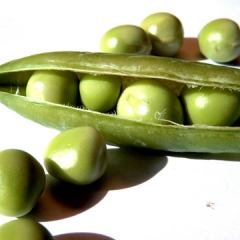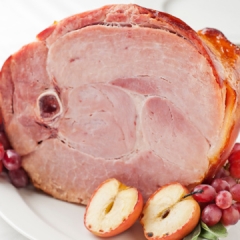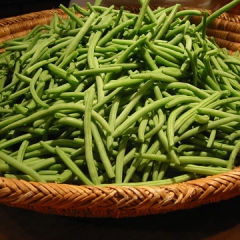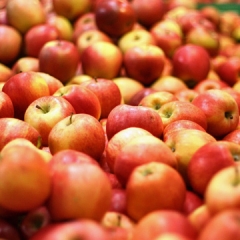Eating Like The Lords And Ladies Of 'Downton Abbey'
Set during the 1910s, the British mini-series Downton Abbey depicts the the day-to-day occurrences in the life of the English elite as well as their servants during the tumultuous time before the start of World War I. Despite the dawning of radical political and technological change, very little seems altered in the household of the upper-crust Earl, Lord Grantham, including the family's lifestyle which, of course, features extravagant feasts.
In Edwardian times, food was meant to impress guests and symbolize the wealth and social status of the family. From the multiple footmen serving dinner and the crystal and china used to the dramatic arrangements of exotic flowers, each component of the dinner party was meant to showcase the family's wealth. French luxuries like champagne, oysters, game, and truffles were expected by guests.
A formal dinner for which diners arrived turned out in all their finery — evening gowns for women and tails for men — was also the scene where young women aimed to impress potential suitors. For instance, the Earl of Grantham, hoping that his eldest daughter could soon be married off, threw an elaborate feast when the Duke of Crowborough came to visit the estate. From the precise placement of the cutlery to the dishes served and the proper table etiquette, a meal was planned to perfection and lasted for hours, often including at least eight courses (if not more).
If two things can be said about Edwardian eating habits, it would have to be that they ate a lot (a lot) and much of it was meat. Now, the thought of a six- to eight-course meal on a nightly basis is enough to give heartburn to most people, but it wouldn't be uncommon for a dinner to begin with oysters, a foie gras terrine, a soup, a rabbit or veal dish, and then a main course of boiled ham or stewed beef with a jelly dish thrown in there somewhere.
But mealtimes were also an important part of the servants' lives as well. During midday, the staff would gather together to gossip and eat their largest meal of the day (consuming much plainer food, of course). The show goes to great lengths to capture this specific time period by recreating the servants' downstairs work areas and the type of cookery they used to prepare the meals.
In an interview for the Daily Mail, creator Julian Fellowes said that for the show's dinner scenes, producers used recipes from the famed Victorian-era cookbook, Mrs. Beeton's Book of Household Management, which was still widely used around the turn of the century. Below, we've adapted the recipes from that cookbook so that when the new season airs on PBS on Jan. 8, you too can eat like the lords and ladies of the manor by serving these dishes (or just see how they were made).
Click here to see how to Throw a Dinner Party Like They do in 'Downton Abbey.'
 Stewed Breast of Veal and Peas
Stewed Breast of Veal and Peas
With meat at the center of this dish, it's typical of a main course served during this time period.
Though the ham is cooked for what seems like a particularly long time in this recipe, it comes with instructions from Mrs. Beeton herself on how to pick out the perfect ham.
A simple side dish that would pair well with the veal dish above.
If you have room for dessert, then this would be a great way to end the meal.


 Apple Charlotte
Apple Charlotte